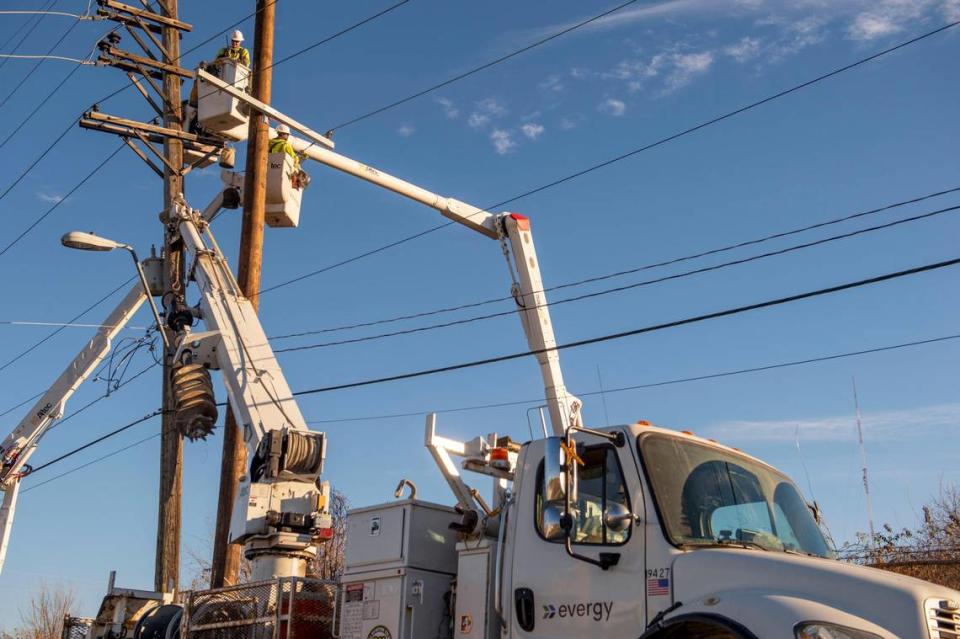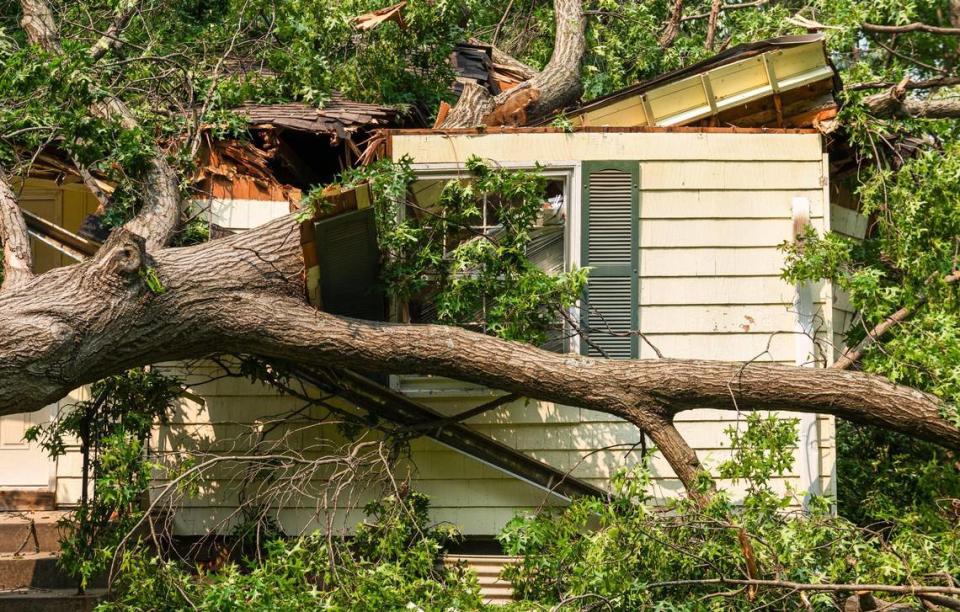Caught off guard by KC’s long Evergy outages? How to prep your house for next emergency
Thousands of people are still without power in Kansas City after Friday’s storm, which knocked down power lines and trees throughout the metro.
If the widespread outages served as a wake-up call to you, it could be a good time to stock up ahead of future storms.
The Centers for Disease Control and Prevention suggests families create an emergency plan to prepare for major storms and potential power outages. That plan should include collecting emergency numbers and preparing an emergency kit with nonperishable foods and medications.
“By taking time today when we’re not in an [emergency] situation lets you clearly identify what your needs are,” said Claire Canaan, assistant director of community preparedness in Johnson County. “You’ll have that sense of confidence that if the power went out tomorrow you’ll have some tools and resources ready to go. The purpose of preparing is to be able to react quickly when an emergency is happening.”
Planning for a power outage
When planning for a power outage, residents should take stock of the items in their homes that require electricity, according to the U.S. Department of Homeland Security. Before an emergency, make sure you have enough batteries, power banks and other kinds of alternative power sources that can meet your needs while the power is out. When making a plan, also be mindful of how long those battery backups will last.
Since refrigerators rely on electricity, it will be important to have a supply of nonperishable foods, water and a thermometer to monitor the temperature of any perishable foods left in the fridge. Keeping the refrigerator closed will keep perishable food cold for up to four hours. Food in the freezer should keep its temperature for up to 48 hours. To make sure you don’t eat spoiled food, use the thermometer to check the temperature of the food. The temperature should not be higher than 40 degrees, according to the department.
However, the U.S. Department of Health and Human Services suggests: “When in doubt, throw it out.” To learn more about what foods need to be discarded after a power outage, visit here.
If you have medicine that must be refrigerated or medical devices powered by electricity, talk to your health care provider ahead of time to set up a game plan in case of emergencies. Your doctor should be able to offer specific advice on how to plan for an emergency and what alternatives are available to you.
If you have a generator, make sure to only use it outdoors and that it is away from any windows. If you do buy a generator, make sure to keep it well maintained so that it is working properly when you need it, Canaan said.
If you don’t have an alternative power source, identify places where you might be able to take shelter if your electricity goes out. This could be a local cooling center like a library or a nearby hotel not impacted by the power outage.
What should be in an emergency supply kit?
Families should consider creating an emergency supply kit, Canaan said. When creating an emergency kit, she said there should be at least 72 hours’ worth of supplies.
If there is a baby in the family, the kit should also include things like diapers, formula, baby wipes and baby food. If there is a pet in the family, the emergency kit should have pet food, immunization records, extra water and any other supplies needed.
The kit should also be easily accessible and checked every six months to make sure your items in there are not expired, Canaan said.
A basic emergency kit for natural disasters and other emergencies should include:
Water (one gallon per person per day for three to seven days)
Food (nonperishable and canned food supply per person for three to seven days)
Battery-powered or hand crank radio and/or
Battery-powered fan
National Oceanic and Atmospheric Administration (NOAA) weather radio
Extra batteries
Cell phone with charger
Battery packs to charge phones
Small generator
Cooler to fill with ice
First aid kit and first aid book
Flashlight
Manual can opener for food
Wrench or pliers to turn off water
Blanket or sleeping bag (one per person)
Prescription medications
Contact lenses and/or glasses
Seasonal change of clothing, including sturdy shoes
Toothbrush, toothpaste, soap
Dentures
Extra keys to your house and car
Important documents (insurance policies, copy of driver’s license, Social Security card, bank account records). It’s helpful to digitize these documents, as it will make them easier to move and keep them safe.
Fire extinguisher
Cash and change
Books, games or cards
Korie Dean contributed to this story.

